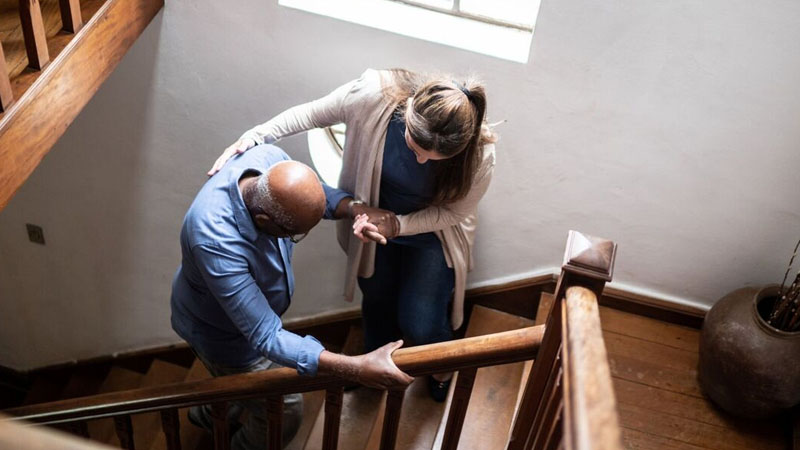A lesser-known yet potentially serious warning sign of dementia may become apparent while walking up or down stairs. Experts say that difficulty with this everyday task could point to early cognitive decline, especially in older adults.
Dementia, which affects more than 50 million people worldwide, is a syndrome associated with the progressive deterioration of brain function. While memory loss is the most widely recognized symptom, the condition can also manifest in physical changes, including movement difficulties.
Alzheimer Scotland, a leading dementia charity, has drawn attention to a specific movement-related sign that might appear in people navigating staircases. “People often assume that memory loss and dementia are one and the same, but there are other key symptoms and signs to look out for,” the charity explains. “Every person with dementia is different. How their illness affects them depends on which areas of their brain are most damaged.”
This variation in symptoms means some individuals may struggle with mobility, particularly when ascending or descending stairs. Those affected might find it difficult to lift their feet properly, increasing their risk of stumbles and falls.
“Dementia can cause problems with how we move about in our surrounding area,” the charity states. “Things like slips, trips, and falls might become more common. You might start to notice that a person is shuffling as opposed to lifting their legs when they are walking.”

If someone is experiencing such difficulties, it’s essential to consult a doctor, as early diagnosis can make a significant difference in managing the condition.
How to Ensure Stair Safety
For those concerned about the safety of someone struggling with stairs, there are several steps that can be taken to reduce the risk of falls. The Alzheimer’s Society advises: “Falls on stairs and steps can cause injuries, so it is important to make them safe.”
Key safety tips include:
- Replacing worn or damaged carpets or floor coverings.
- Ensuring banisters are securely fixed.
- Using stair edging, such as contrasting paint or “nosing,” to highlight step edges.
- Installing easy-grip handrails on both sides of the stairs.
- Keeping stairways clear of clutter and avoiding carrying large items while using stairs.
In addition, strength and balance exercises performed twice a week can significantly improve mobility. These might include walking, sitting, and standing routines, with physiotherapy as an option upon GP referral.
The NHS also lists other dementia symptoms, including memory loss, reduced mental sharpness, mood changes, language difficulties, and withdrawal from social situations. Anyone noticing these symptoms is advised to seek medical advice promptly.

